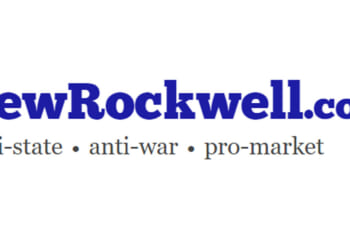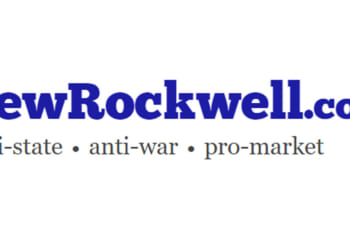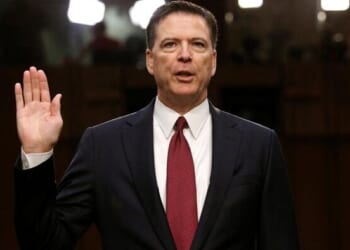As President Donald Trump intensifies immigration enforcement in his second term, cities such as Chicago have become the epicenter of resistance to federal law enforcement. So what is fueling Chicago’s resistance? In a city where migrant arrests have skyrocketed due to upticks in crime, why are city leaders bent on refusing assistance aimed at keeping law-abiding residents and federal workers safe?
In a lot of cases, grants from taxpayers and the philanthropic sector are helping pay for the mischief.
In early October, Defense Secretary Pete Hegseth mobilized 300 members of the Illinois National Guard to Chicago, among other cities, according to the U.S. military’s Northern Command. Troops were tasked with protecting ICE personnel and facilities, as well as other federal property.
In response, the state of Illinois and the city of Chicago filed a lawsuit against the Trump administration, alleging the deployment was unlawful. The result has been widespread protests and courtroom battles, with Illinois Governor J.B. Pritzker and Chicago Mayor Brandon Johnson at the forefront.
Still, the White House insists its move is essential to peacekeeping and protection against violent agitators disrupting operations. Pritzker and Johnson are painting the president’s move as political theater and an “unlawful” occupation of state soil.
Early on, a federal judge initially halted parts of Trump’s deployment for review, citing unreliable claims of unrest. But tensions have escalated. In early November, shots were fired at federal agents in Chicago’s Little Village neighborhood, allegedly catalyzing the use of tear gas deployments on protesters.
Then, to complicate matters, a judge ruled that Border Patrol agents had fabricated details about a tear gas incident, leading to stricter limits on force. Just days later, another court order demanded urgent improvements at the Broadview ICE facility amid allegations of inhumane treatment. To quell the chaos, the Trump administration has appealed to the Supreme Court to affirm the deployment’s legality, arguing that ICE can’t operate without military backup.
Meanwhile, as recently as November 8, Homeland Security reported in an X post that while conducting immigration enforcement operations near 26th Street and Kedzie Avenue in Chicago, Border Patrol was fired upon.
Today, U.S. Border Patrol was conducting immigration enforcement operations near 26th Street and Kedzie Avenue in Chicago, Illinois, when an unknown male driving a black Jeep fired shots at agents and fled the scene. An unknown number of agitators also threw a paint can and bricks at Border Patrol’s vehicles. Chicago Police Department was called for assistance and cleared the scene. The shooter and vehicle remain at large, and this is a dynamic situation.
This incident is not isolated and reflects a growing and dangerous trend of violence and obstruction. Over the past two months, we’ve seen an increase in assaults and obstruction targeting federal law enforcement during operations. These confrontations highlight the dangers our agents face daily and the escalating aggression toward law enforcement. The violence must end.
A taxpayer-subsidized backbone
Dominating Illinois’ immigrant advocacy landscape is the Illinois Coalition for Immigrant and Refugee Rights, an influential alliance uniting more than 100 member groups. Its latest tax filings show staggering revenues of $80.4 million for fiscal year 2023, with $77.7 million stemming directly from government grants—figures that could rival those of a modest state department.
ICIRR runs a round-the-clock hotline for spotting ICE movements, conducts widespread “Know Your Rights” workshops, and provides legal and financial support to migrants. While presented as compassionate aid, these programs often rally communities to resist deportations, as evidenced in recent flare-ups where tear gas dispersed crowds. Among its state-backed efforts is the Illinois Immigrant Services Line Item, which snagged $38 million in appropriations last year for integration and asylum assistance.
Governor Pritzker, meanwhile, has poured more fuel on this fire, committing more than $160 million for migrant housing and services, on top of $41.5 million earmarked for asylum seekers the year before. Statewide, Illinois is on track to shell out $2.5 billion on migrant support by year’s end, with significant portions trickling down to groups like ICIRR that actively work against ICE enforcement efforts.
This setup highlights a troubling trend: public money propping up entities that undermine federal priorities, forcing taxpayers to bankroll efforts to thwart immigration laws—even as dangers mount for agents conducting routine operations.
Philanthropy fueling the frontline
Complementing all this is Organized Communities Against Deportations, a Chicago outfit launched in 2013 that spearheads disruptions, such as blocking deportation vehicles, storming ICE buildings, and urging local police to disregard federal detainers. Despite its compact size, hefty philanthropic infusions buoy OCAD’s operations. The group’s 2024 tax filing reported $527,000 in revenue against $902,000 in outlays.
Key backers of OCAD include the Marguerite Casey Foundation, which kicked in $100,000 for core operations, the Grand Victoria Foundation’s $100,000 project boost; and $93,500 from the Chicago Community Trust that was framed as bolstering civic strength.
The mayhem at Chicago’s Broadview processing center, where earlier scuffles involved arrests and pepper rounds, was bolstered, if not primarily attributed to, OCAD. In the ensuing weeks, similar conflicts erupted, with tear gas affecting local residents—including children—in areas such as Irving Park.
Litigation as a weapon
On the legal front, groups such as the National Immigrant Justice Center and the ACLU of Illinois wield the courtroom gavel.
NIJC, independent since its 2022 split from Heartland Alliance, pulled in $8.2 million in 2024, mostly from donations and grants. It taps city coffers through the Chicago Legal Protection Fund, a public program that provides free legal representation to those at risk of deportation. Federally, it draws from the Trafficking Victims Protection Reauthorization Act to advocate for unaccompanied children, solidifying local defiance against ICE.
The ACLU of Illinois, alongside its Roger Baldwin Foundation arm, leads the charge in suits contesting ICE tactics and Guard involvement, underscoring the ACLU’s vast resources at work.
These nonprofit endeavors dovetail with state leaders’ agendas. Pritzker has defended Illinois as a sanctuary haven, while U.S. Sen. Dick Durbin (D-IL) has broadened initiatives that sever ties between local entities and ICE. Johnson escalated his October executive order designating ICE-Free Zones and barring federal officers from municipal properties.
Hefty fiscal pledges underpin the resistance movement. As these organizations mobilize demonstrators, deliver courtroom defenses, and sway lawmakers, their funding web—spanning grants, endowments, and donor funds—fosters a self-reinforcing cycle of influence and action.
ICIRR’s $77 million in grants alone, along with the leveraged resources of OCAD, NIJC, and ACLU, confirm that Illinois residents are unknowingly funding this anti-ICE crusade.















